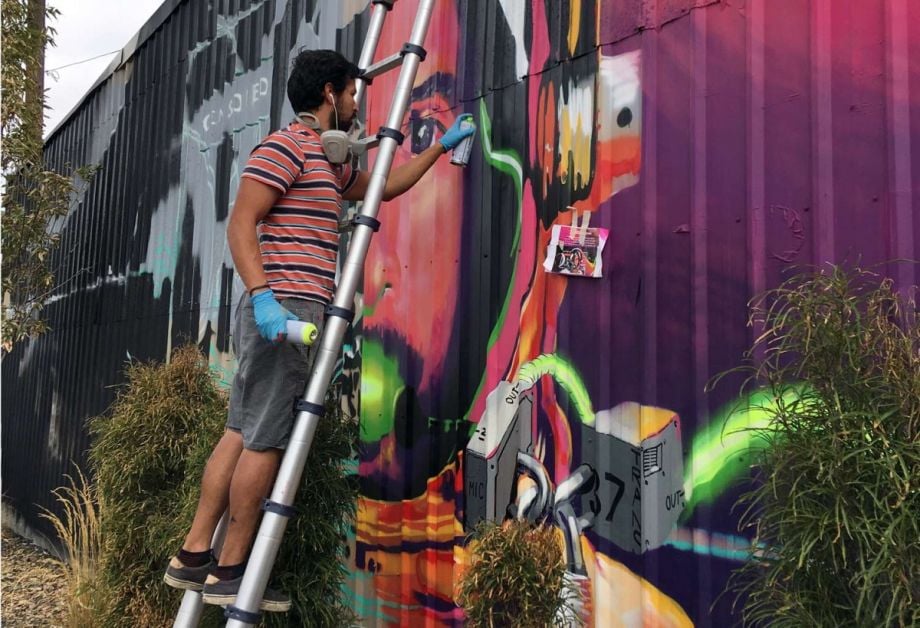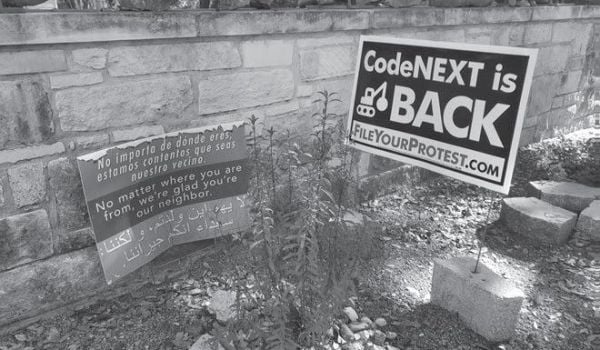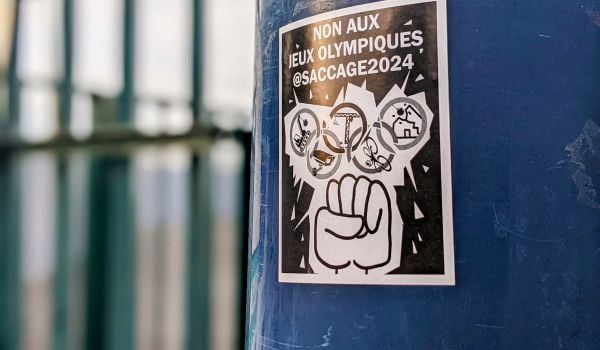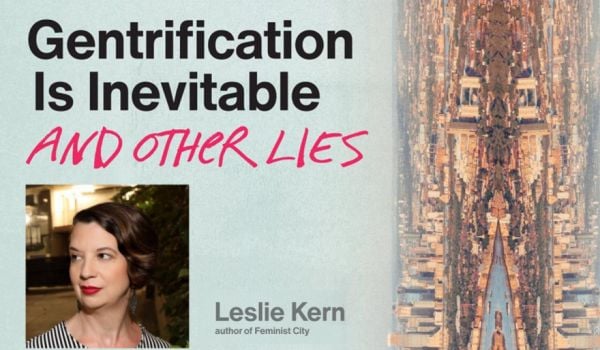Encircled by Boise and snaking along a river of the same name lies Garden City, Idaho — a town of just under 12,000 people which painter Surel Mitchell decided to call home in 1998. She quickly became hyperactive in shaping the community by serving on Garden City’s Planning and Zoning Commission and its first Arts Commission. A five-block range was officially designated as live, work, create space in 2007 before being formally christened with her name — the Surel Mitchell Live-Work-Create District — in 2011 after her passing.
It wasn’t long, however, until the affordable, creative Garden City full of shared common spaces began grappling with the same gentrification that so many other arts districts across the country do — development determined to profit off of the walkability and creativity of the artists and gallery-filled space.
Every year Garden City has become less and less affordable, says Derek Hurd, an architect and furniture designer living and working there. “Our property value has increased like seven times” since arriving roughly six years ago, he says. “It’s definitely gentrifying — it’s the classic artists move in because they need cheap spaces, then pretty soon there’s condos and townhouses following.”
As a result, Garden City’s current residents are carrying on Mitchell’s legacy in a way they never expected — by inserting themselves into the city’s various committees in a last-ditch effort to do what they can to keep the district as true to its intention as possible.
It seemed like they may have lost the war when, circa 2016, a pair of developers began setting out to “transform the neighborhood into a dense, urban playground for artists and entrepreneurs, adding 203 apartments and townhomes and 116,200 feet of commercial space,” wrote Idaho Statesman’s Kate Talerico. In 2014, the median price of sold homes in Garden City was $188,00. In 2019 that number jumped by nearly 57% to $295,000.
“Our initial approach was the hope of forming some kind of LLC that would focus on social investing and we would buy property with the intent of artists using it,” explains Jodi Eichelberger, program director at Surel’s Place, a nonprofit artist residency that formed at Mitchell’s home after she died. “We were outbid every time.”
Buying failed, but they didn’t give up. This year, however, has presented new opportunities. Earlier this year the developers announced that their company was dissolved and put the land parcels that once comprised their grand vision up for sale.
“That’s when we came in with our current strategy: paying attention to when developers file plans with the city and reaching out to them to start a conversation about how we can be a part of it,” Eichelberger explains — especially if developers mention some kind of art component. The hope is that, at the very least, Surel’s Place can help developers work with and commission local artists rather than national artists to fulfill art components. These days all of the city’s meetings happen over Zoom, so all it takes is logging on to see developers’ presentations and finding their contact information in the pile of paperwork they’re required to file. “The two we’ve reached out to so far have been really interested in engaging in conversations, but it’s still early so we’re not sure what results will come,” he says.
So far, though, there have been some small wins.
The land sale has resulted in one new commercial and residential project called Casino Beach. Surel’s Place supported its developers in securing a parking variance so that they can install tandem garages that, instead of holding two cars, one side of each garage can function as artist studios.
“I don’t know if it will work, but we’re working with them to write into their Covenants, Conditions and Restrictions” — the rules imposed on a group of homes or condos by builders or neighborhood and homeowner associations — “that if you live there, you will make available studio space to other artists or yourself. So, during [First Friday] events, they’ll roll that door up and it will become this whole alley of creative outlets where artists are meeting the public and selling their work and showing how they make things,” Eichelberger says.
Hurd, who sits on Garden City’s Design Review Committee, sees the idea as a way to engage with the community and offer a space where artists can show their work, especially during the monthly First Friday Art Walk events.
Looking back, Hurd sees the fact that Garden City’s live-work designation was simply overlaid over a commercially zoned district as central to the gentrification and lack of affordability that Surel’s modern contemporaries face today. Now, he says, engagement is the only way to go.
“Often times people just say no, no, no — development is bad… but that drum has been beat and everyone knows it, so let’s embrace the fact that this is going to happen and try to make it better,” he says. Instead, it’s about “how do we keep being a part of new projects and how can [developers] help us to be invited so we can support you?”
“I don’t want to say that we’re going to be the last affordable place for artists,” Hurd adds, “but we’re doing what we can.”

Cinnamon Janzer is a freelance journalist based in Minneapolis. Her work has appeared in National Geographic, U.S. News & World Report, Rewire.news, and more. She holds an MA in Social Design, with a specialization in intervention design, from the Maryland Institute College of Art and a BA in Cultural Anthropology and Fine Art from the University of Minnesota, Twin Cities.
Follow Cinnamon .(JavaScript must be enabled to view this email address)







_600_350_80_s_c1.jpg)








